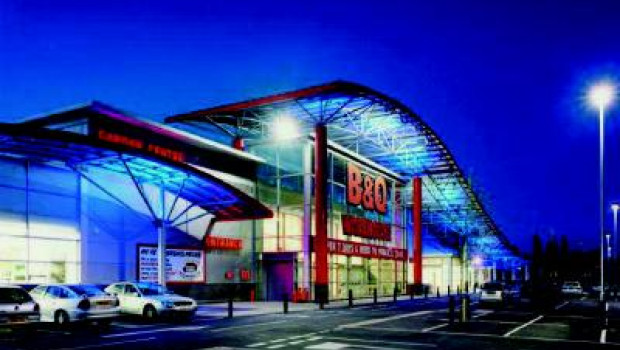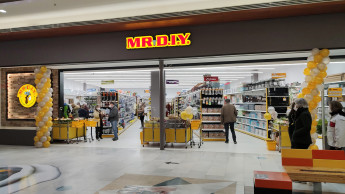Graham Fairbank, Head of Corporate Communication of Kingfisher, about opportunities and challenges on the international DIY market. Here on DIYglobal is an article from the special issue published to celebrate the 25th anniversary of diy-Branchenmagazin
Growth opportunities on domestic markets, too
Foreign expansion is currently regarded as the royal road to success by the retail trade. The US firm Wal-Mart is trying to establish itself in Europe, while the greatest revenue growth for Metro, the German chain, is now coming from abroad. The European DIY sector is also venturing further and further afield. For example, Obi and Kingfisher are the only European home improvement companies to date to record initial successes in the potentially huge Asian Market. In future, leading DIY chains will have more international stores than domestic ones.
Nevertheless, this focus on foreign markets may easily blind companies to opportunities at home. The European home improvement sector is an attractive growth market worth around €130 billion. Average growth of six percent is forecast for the period to 2004. Other factors that make the European market exciting are the many common products and fragmented supplier base. These offer the preconditions for pan-European retailers to leverage their scale.
Opportunities for the right format and the right price
The European market offers substantial room for further expansion – provided that retailers get their formats and prices right. Cost management is an important tool for achieving price leadership. Cost price reduction (CPR) programmes with key suppliers help cut the industry’s production costs, and hence the retail trade’s purchasing costs, significantly. The savings generated can be reinvested in price cuts and improved services that benefit customers – a virtuous circle that helps improve margins.
The future belongs to large-format stores featuring more than 40,000 products on sites measuring in excess of 10,000 square meters, plus an additional 5,000 square meters of garden centre. For example, British market research indicates that London alone is capable of supporting more than 40 large-format warehouses. The Birmingham, Manchester and Glasgow catchment areas represent repair, maintenance and improvement (RMI) markets totalling more than € 480 million (£ 300 million) and can support a large number of large-format stores.
A comparison with the USA shows that the RMI market there is only five times the size of that in the United Kingdom, but has 30 times as many large-format stores. This provides an interesting insight into the potential offered by such a network. In Germany, the Hornbach chain has proved that the large-format concept works, while in France market data indicates that it offers further potential despite structural conditions.--nextpage--
Global sourcing the strategic growth driver
Another critical success factor for international retailers is a centralised infrastructure. Global sourcing will be one of the key strategic motors for generating growth in increasingly global markets. Of course, it goes without saying that product ranges must still be tailored to national and local needs. However, the move from local sourcing to global procurement is what makes true economies of scale possible. The price benefits of lower wage and unit costs in Asian countries offset the resulting freight costs. Investments in a global supply chain structure and cross-border procurement centres pay off: Kingfisher Asia Limited, which was founded in 1994, has grown rapidly and now generates annual net savings of around €130 million.
Centralised buying is becoming more and more important: product ranges in individual European countries will overlap by up to 50 per cent in future. At present, this figure is around eight percent at Castorama and B&Q for example. In addition, pan-European retail brands will be created. This is not wishful thinking – it is reality: Performance Power, a B&Q brand, has already been introduced in the United Kingdom, France, Poland and Ireland. And Colours, an own-brand range of paint, will even be available in China.
A common vision is the way forward
Global retail chains need to do more than simply stick flags in the map or amalgamate a loose collection of enterprises with a similar approach. They need a common vision. Kingfisher offers its customers the best possible prices, the best possible service and the best possible offering. Demand for this is global, although how it is satisfied depends on local, historical and cultural requirements.
New markets provide fresh impetus
The example of China shows how a new market needs room to develop in its own way. At first glance, the B&Q Warehouses in the United Kingdom and China are extremely similar. However, a closer look reveals differences – even if the concepts originated in Europe. “Do-it-yourself” in China means “create-it-yourself”: flats are sold as unfinished concrete shells, and customers need all-round concepts including bathroom installations and kitchens. Showrooms containing fixtures and fittings, furniture and decorative elements for all walks of life are critical to success here. Interior decorators plan the entire interior of the flats with customers.
Flexibility is also needed. To be successful in Asia, you need to combine many years of know-how with local expertise and a willingness to experiment. In this context, best practice transfer is not a one-way process in favour of these new markets, but also influences the Old World. For example, B&Q used the knowledge of large-format stores in densely populated regions that it gained in Asia to open a highly successful double-decker B&Q Warehouse in Sutton in the United Kingdom, which offers a large range of products on a small site. And the lessons learned with the company’s Showroom offerings in China are providing fresh impetus on the European market.
Transcending borders
International success depends on succeeding in local markets. Experience to date shows that best practice transfer at an international level is both necessary and possible. Skills, knowledge and experience can be transferred quickly and efficiently. Price leadership, cost reduction programmes with key suppliers, innovative product mixes, own brands, logistics – the recipe for success is the same the world over. These principles can help transcend borders if they are implemented in line with local conditions.
Graham Fairbank, Head of Corporate Communications of Kingfisher plc, London













